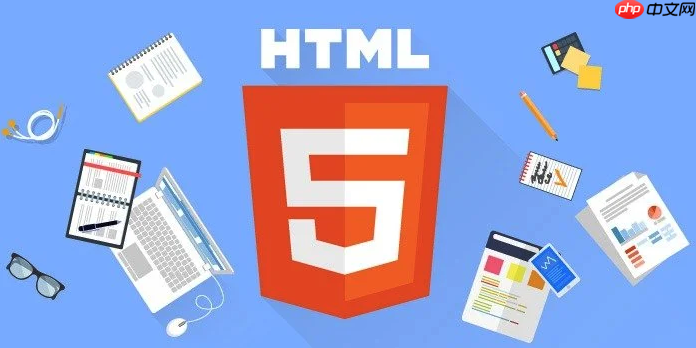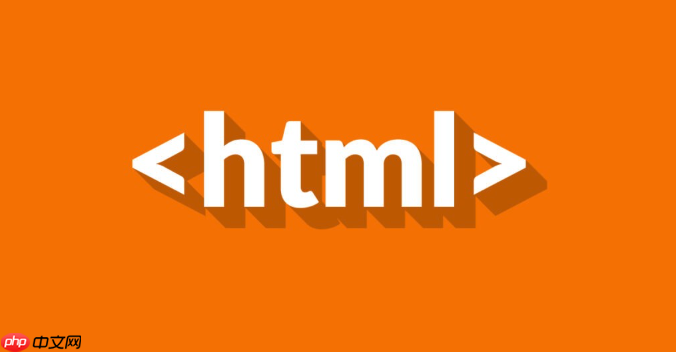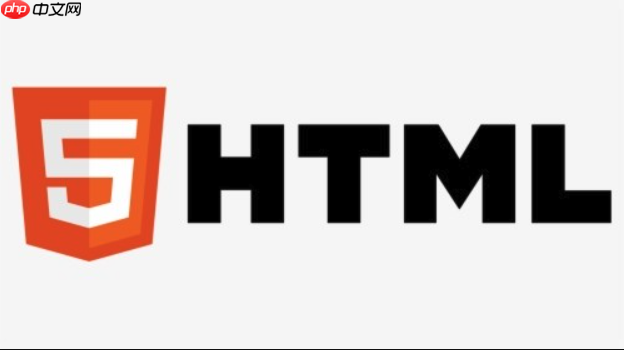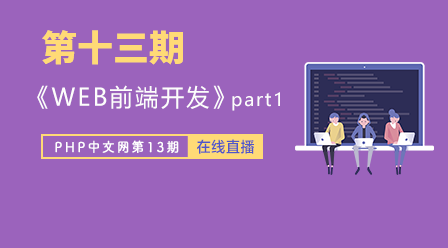要将html表单数据发送到服务器,核心是通过form元素的action和method属性指定目标url和提交方式,最常用的是get和post方法;1. 使用form标签时,设置action属性指向处理数据的服务器端接口,method属性设置为"get"或"post",浏览器在提交时自动发送数据;2. get方法将数据附加在url查询字符串中,适用于获取数据且不改变服务器状态的场景,但数据量有限且不安全;3. post方法将数据放在请求体中,适合传输敏感或大量数据,更安全且无大小限制;4. 现代开发中常使用javascript的fetch api或xmlhttprequest实现异步提交,提升用户体验,避免页面刷新;5. 文件上传需在form标签中设置enctype="multipart/form-data",并使用formdata对象配合fetch或xhr发送二进制文件数据,实现灵活高效的异步上传。

HTML中的表单数据要发送到服务器,核心就是通过
form
action
method
GET
POST
Fetch API
XMLHttpRequest

要将HTML表单数据发送到服务器,最直接的方式是利用
form
form
action
method
GET
POST
一个基本的表单看起来会像这样:
立即学习“前端免费学习笔记(深入)”;

<form action="/submit-data" method="post">
<label for="username">用户名:</label>
<input type="text" id="username" name="username" required>
<label for="password">密码:</label>
<input type="password" id="password" name="password" required>
<button type="submit">提交</button>
</form>当用户点击
type="submit"
name
method
action
GET
POST
GET
POST
这个问题啊,初学者可能觉得有点模糊,但它其实是Web开发的基础。简单来说,
GET
POST

GET
GET
?
action.php?name=John&age=30
GET
GET
而
POST
POST
POST
GET
POST
POST
POST
GET
POST
当然有,而且在现代前端开发中,这些方式的使用频率甚至更高,它们通常都基于JavaScript实现,我们称之为“异步提交”或者“AJAX请求”。
最常见的两种就是
XMLHttpRequest (XHR)
Fetch API
XMLHttpRequest
XHR
// 简单的XHR POST请求示例
const xhr = new XMLHttpRequest();
xhr.open('POST', '/api/check-username', true);
xhr.setRequestHeader('Content-Type', 'application/json'); // 告诉服务器我发送的是JSON数据
xhr.onreadystatechange = function() {
if (xhr.readyState === 4 && xhr.status === 200) {
console.log('服务器响应:', xhr.responseText);
}
};
const data = { username: 'testuser123' };
xhr.send(JSON.stringify(data)); // 发送JSON字符串而
Fetch API
Promise
Fetch
// 简单的Fetch POST请求示例
const data = { username: 'newuser', email: 'new@example.com' };
fetch('/api/register', {
method: 'POST', // 指定请求方法
headers: {
'Content-Type': 'application/json', // 告诉服务器我发送的是JSON数据
},
body: JSON.stringify(data), // 将JavaScript对象转换为JSON字符串发送
})
.then(response => {
if (!response.ok) { // 检查HTTP状态码是否表示成功
throw new Error(`HTTP error! status: ${response.status}`);
}
return response.json(); // 解析JSON响应
})
.then(data => {
console.log('注册成功:', data);
})
.catch(error => {
console.error('注册失败:', error);
});这两种方式的优势在于:
文件上传是一个比较特殊但又非常常见的表单提交场景。你不能简单地用
GET
POST
对于HTML的
form
form
enctype="multipart/form-data"
<form action="/upload-file" method="post" enctype="multipart/form-data">
<label for="profilePic">选择头像:</label>
<input type="file" id="profilePic" name="profilePic" accept="image/*">
<label for="description">描述:</label>
<textarea id="description" name="description"></textarea>
<button type="submit">上传</button>
</form>这里的
input type="file"
name="profilePic"
accept="image/*"
在JavaScript异步上传文件时,我们通常会用到
FormData
FormData
multipart/form-data
// 使用Fetch API上传文件
const fileInput = document.getElementById('profilePic');
const descriptionTextarea = document.getElementById('description');
const formData = new FormData(); // 创建一个FormData对象
formData.append('profilePic', fileInput.files[0]); // 将文件添加到FormData
formData.append('description', descriptionTextarea.value); // 添加其他文本字段
fetch('/upload-file', {
method: 'POST',
body: formData, // 直接将FormData对象作为请求体发送,Fetch会自动设置正确的Content-Type
})
.then(response => response.json())
.then(data => {
console.log('文件上传成功:', data);
})
.catch(error => {
console.error('文件上传失败:', error);
});这种方式的好处是,你可以在文件上传过程中显示进度条,或者在上传完成后立即处理服务器的响应,而无需刷新页面,大大提升了用户体验。服务器端在接收到
multipart/form-data
enctype
FormData
以上就是HTML中的表单数据怎么发送到服务器? 数据提交方式的详细内容,更多请关注php中文网其它相关文章!

HTML怎么学习?HTML怎么入门?HTML在哪学?HTML怎么学才快?不用担心,这里为大家提供了HTML速学教程(入门课程),有需要的小伙伴保存下载就能学习啦!




Copyright 2014-2025 https://www.php.cn/ All Rights Reserved | php.cn | 湘ICP备2023035733号